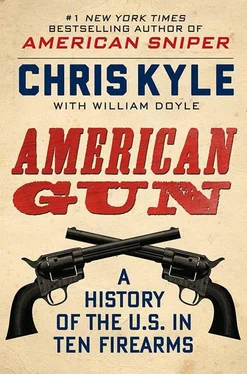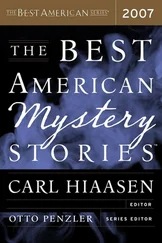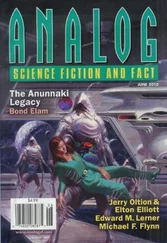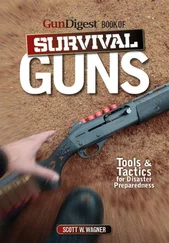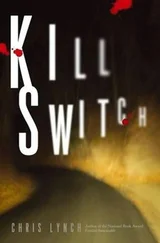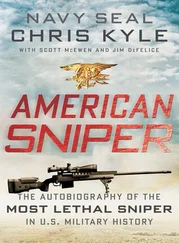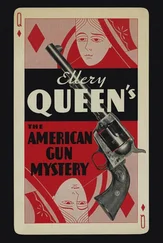The reporters didn’t get the chance. Seeing the weapons, the crowd decided freedom of the press was an unalienable right, and took off.
Depending on the model, the Gatling had from six to ten rotating barrels that fired two hundred bullets a minute. The rifled barrels cooled just enough between shots to save them from overheating. Heat is a problem every rapid-fire weapon faces, and the reason things like water jackets were invented later on.
With up to 1,200 rounds spitting out in the space of a minute, the Gatling could put a serious hurt on an enemy. But the guns had some drawbacks, as we’ve touched on earlier. They were heavy and had to be carted around on two-wheel carriages like artillery pieces. Unlike artillery, they needed to be pretty close to the action, which made them and their crews conspicuous targets on the battlefield. The guns were mounted high, and a gun still hasn’t been invented that can duck incoming fire.
Another early machine gun, the Hotchkiss “cannon-revolver,” was similar to the Gatling though its firing mechanism worked on a different principle. The gun was designed in 1872 and manufactured by a company owned by Benjamin Berkeley Hotchkiss. Though he was American, he set up his factory in France, which is where the guns were produced. Société Anonyme des Anciens Etablissements Hotchkiss et Cie made a line of light cannons which were also used by the American Army.
The next leap forward in machine-gun technology was the Maxim gun, introduced in 1884 by Maine-born inventor Hiram Maxim, a farmer’s son and inventor whose works included a better mousetrap. Visiting the Paris Electrical Exhibition in 1881, Maxim ran into a friend who told him there was good money in war. “Hang your chemistry and electricity!” said the friend. “If you want to make a pile of money, invent something that will enable these Europeans to cut each other’s throats with greater efficiency.”
Maxim apparently took the advice to heart, and gave up on his other inventions to concentrate on guns. Figuring that soldiers needed a portable, fast-reloading, rapid-fire gun, he developed a mechanism that used the recoil of the weapon to load the next cartridge. He came up with the world’s first light, single-barrel automatic machine gun. The self-powered gun was water-cooled and could fire five hundred bullets per minute and more.
By the way, “light” is a relative term. Even the later models weighed forty pounds or more. You wouldn’t have wanted to carry one on your back for very long.
As his friend predicted, Europe pounced on the weapon. In 1896, the British-owned Vickers corporation purchased Maxim’s company and began producing the American-designed machine guns under its own name. During World War I, Vickers guns were standard equipment for British forces. They were even adapted for air combat on the first fighter planes.
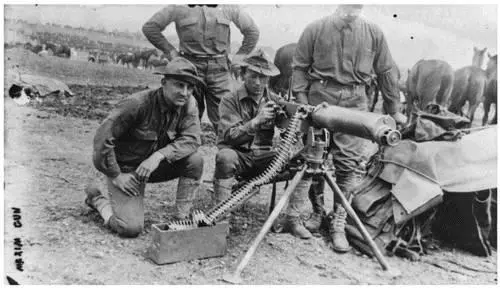
A rare sight: U.S. troops operating a Maxim machine gun. Texas, 1911.
Library of Congress
Not to be outgunned, the Germans and Russians ripped off the Maxim design for themselves. The lethal firepower of the machine gun was one of the big reasons World War I became such a bloody mess. No war is pretty, but trench warfare brought the ugliness to new lows. Military commanders on both sides were insanely slow to adapt to the new combat conditions on the ground. Hundreds of thousands of troops were mowed down in pointless assaults “over the top” as they ran into the killing fields ruled by the machine gun.
By the time the United States entered the war, there were four fairly decent machine-gun options available on the open market, all conceived by Americans: the Maxim, Lewis, Benet, and the Colt Model 1895, designed by the great John Browning. If you wanted to choose just one, the Lewis gun would have been a pretty good bet, especially since it could be set up and handled by one man, with another toting the ammo. The earliest models of the Browning had performed well in limited service in the Spanish-American War of 1898. But the usual delays and muddled thinking at the Ordnance Department meant the Americans ended up with French machine guns at first; only toward the end of the war did the Lewis and Browning weapons start coming to the troops in any numbers.
Those French machine guns? Well, a few thousand were Hotchkiss machine guns, which were manufactured by the company Benjamin Hotchkiss had established in France the previous century. Modern descendants of his “cannon-revolver,” the firm’s family of machine guns were decent, though very heavy for infantry weapons.
But most of the guns the Americans ended up with were Chauchat light machine guns. These featured magazines with exposed cartridges that jammed every time they got into mud or dirt—pretty much an everyday thing in combat. Welcome to war!
There were a few cool things about the Chauchat, like the fact that it had a pistol grip and was lightweight—the “Pig” or Squad Automatic Weapon of its day. But if you were in the trenches depending on a Chauchat to save your hide, prayer might have been a better option.
Until this point, the machine gun was a stationary weapon. It was great at defending territory and providing cover fire for an advance. Nice guns, as long as you didn’t have to move them: the best were heavy mothers. Most took two or more soldiers (and maybe even a horse) to operate, transport, and carry the ammo.
Anyone who thought about it, or busted his hump carrying one of them, knew the future of firearms lay in a fully portable, handheld machine gun. As it happened, one American figured out how to make it happen.
John Taliaferro Thompson was a rare thing: a brilliant and farsighted Army ordnance officer. A Kentucky boy, he headed north and graduated from West Point. A colonel by the time the Spanish-American War started, he did a reasonably good job as the chief ordnance officer attached to the commanding general of the Cuban campaign.
As a member of the Ordnance Department, Thompson played a key role in getting the M1903 Springfield rifle and the M1911 pistol made. He and Major Louis LaGarde supervised the torture tests that selected the winning M1911 pistol design. By 1914, he had automatic weapons on his mind. He retired from the Army and went over to Remington Arms as their chief engineer. He also started a company called Auto-Ordnance to manufacture an automatic rifle. Auto-Ordnance partnered up with a Navy man who had patented a delayed blowback breech system, and went to work adapting it to a rifle design.
The war convinced Uncle Sam that the Army needed Thompson back, and he was recalled to active duty. He was put in charge of American small arms production. But the automatic rifle was never far from his mind, and his company kept working on it.
The blowback breech system had a lot of promise, but the engineers Thompson hired discovered that using rifle cartridges caused too many problems. Bullets had a very nasty tendency of firing too soon, which can really put a dent in the day of the guy holding the gun, not to mention the people around him. Bullets that followed often didn’t eject smoothly, which wasn’t quite as bad a problem but still didn’t make for a happy operator.
The engineers did some thinking and decided what they really needed was a shorter cartridge. Thompson and his team soon turned to one he knew very well: the .45 ACP rounds that did such a good job in the M1911 pistol.
While pistol rounds simply don’t go as far as cartridges made for rifles, in the close quarters of a trench, maximum short-range stopping power trumps long-range accuracy. Since the gun was meant as a trench clearer, Thompson realized, the bullets were perfect.
Читать дальше
